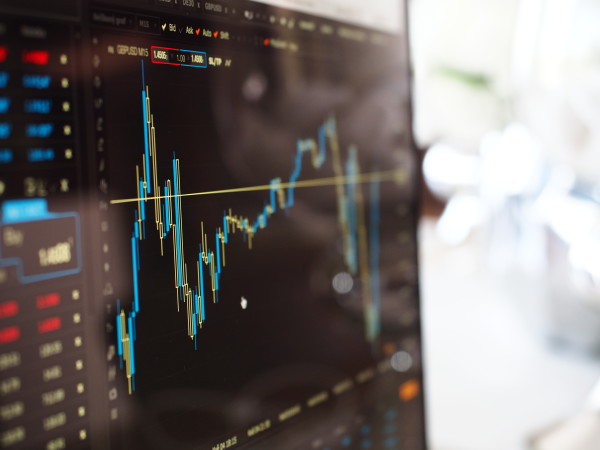

Faced with this kind of uncertainty, it is little wonder last year’s Isa investments brought few surprises. Woodford Equity Income was our clients’ most bought fund, followed by Fundsmith Equity. Another familiar favourite, Invesco Perpetual Monthly Income Plus, also made it into our top 10.
Yet despite all the global political upheaval that has since occurred, client buys for this year’s Isa season look set to follow similar trends. In the three months to the end of December 2016, Woodford and Fundsmith retained their top spots, while the Invesco fund came in third.
All three are excellent funds run by some of the best managers in the business, so these are certainly solid choices.
However, 2017 may mark a bit of a departure from the market patterns we have seen in the previous few years. For investors that are willing to make a few changes or additions to their regular portfolio this Isa season, there may be some new opportunities.
Even if investors are reluctant to stray from the UK, there may be scope to introduce them to some funds they have not previously considered. Over the past few years, quality growth style investing has been firmly in favour. Ultra-low rates and quantitative easing around the world laid solid foundations for bond proxy stocks to outperform.
Throughout 2016, however, a rotation began back towards value investing. Now that the US has raised rates – and suggested three further rises in 2017 – the outlook for global growth seems suddenly sunnier.
Inflation may start to tick up here in the UK – albeit on the back of a falling pound – which would likely discourage the Bank of England from making any further rate cuts. Indeed, we may also see a rise on this side of the Atlantic before the year is out.
In this kind of environment, cyclical companies and cheap, value stocks tend to do best. This means we may see an increasing preference for funds with a value tilt this Isa season. In 2016, some excellent value-driven funds were among the top performers, in terms of total returns, in the IA UK All Companies sector.
For example, Schroder Recovery came in second, returning 30.5 per cent, and R&M UK Equity Long-Term Recovery was fifth, delivering 27 per cent (against the FTSE All Share’s 15 per cent). If the trend continues, some exposure to value style funds may turn out to be very worthwhile for investors in 2017.
As Trump’s first 100 days in office begin, we should finally start to get some detail about his plans for the US economy. Markets surprised to the upside after his election and the Fed went ahead and raised rates, despite many forecasting such things may not happen if Clinton did not win.
I have been cautious on US equities over the past year, which seem particularly expensive looking at the S&P 500’s Shiller price-to-earnings ratio, which takes into account 10-year average earnings for companies. In the wake of Trump’s pro-business, lower taxes rhetoric, however, some fund managers are now forecasting higher corporate earnings and improved economic growth for 2017.
US Federal Reserve chair Janet Yellen’s rate rise in December was taken as a confirmation of this outlook and suddenly the US seems back to being the shining economic hope of the developed world. I think it is wise not to get too carried away – there are still a lot of Trump unknowns and markets are circling record highs, which means price risk is still very much a concern – but I have been overly cautious on the US before and missed some good profits.
Our clients consistently like Axa Framlington American Growth, which, true to its name, performs particularly well when the US market is in a growth phase. It was among our 10 most bought funds both last Isa season and in the last quarter of 2016.
If value does come into favour though, a fund such as Brown Advisory US Flexible Equity may do well. It has a value bias but will look for growth stocks too, and this style diversification makes it a good core candidate. Alternatively, I consider Hermes US SMID Equity a bit of a hidden gem. Its focus on small and mid-cap stocks could prove rewarding in a market in which large caps are so fully valued.
Something else for investors to keep an eye on this year will be currency and its effect on returns. The significant fall in the pound served investors well in 2016. European stocks, for example, were up 18 per cent in sterling terms. In local currency (that is, euro), they gained just 3 per cent.
The lower pound is also viewed as a positive for many of our larger companies who earn much of their revenue overseas. This has in large part been responsible for the strong gains in UK equities since the Brexit vote.
The currency tumble seems to have stabilised for now, however, which means the equities themselves will have to do the hard yards in the year ahead. With the pound’s drop, international stocks will also be more expensive for Brits to buy, so this may also reinforce an invest-local mindset this Isa season.
One possible area in which currency could help returns for UK investors is the US, where the dollar has risen strongly in the wake of the Fed’s December decision. Further rate rises are likely to send it even higher.
On the downside, this puts emerging markets under pressure and the stronger dollar is expected to be a financial headwind for certain emerging economies. In the last quarter of 2016, our clients chose wisely for this environment, with the Stewart Investors Asia Pacific Leaders fund our sixth most bought.
It has a strong valuation discipline and a bottom-up company research focus. Manager David Gait is not afraid to step away from the benchmark, which may help to reduce some of the macro risk.
The other emerging market fund falling just outside our clients’ 10 most bought in the three months to the end of December was Jupiter India. India has one of the better developing market outlooks under Trump’s US protectionist politics, because its strong domestic economy can generate growth regardless of how its exports perform. What is more, prime minister Narendra Modi’s goods and services tax is due to be implemented in the first half of this year, which should be a big positive over the long term for the Indian economy.
A final wild card, if you like, which may spark some of your more adventurous clients’ interest this Isa season, is Russian equities. With sanctions and a plummeting oil price, the country’s economy has suffered. Putin has not been popular with developed nations’ leaders and investors have fled what was once considered one of the world’s most promising emerging markets.
But the Putin and Trump bromance, as I recently delightfully heard it termed, provides an opportunity to re-assess the Russian case. Given that US-Asian and US-Latin American relations are likely to be upset by some of Trump’s policies, we may see the risk premia at which Russian equities have traditionally traded versus their global peers start to gradually reduce. A small allocation to a fund such as Charlemagne Magna Emerging Markets Dividend, which currently has a 6 per cent holding in Russian stocks, could be one way to get some exposure.
Darius McDermott, managing director, Chelsea Financial Services
Key points
Clients are buying the same Isa funds they did this time last year, despite the Brexit vote in the interim
On US stocks, some fund managers are predicting higher corporate earnings following Trump's election
India might benefit from Trump's protectionist policies, because it is less affected by exports



